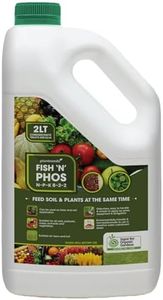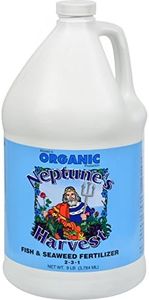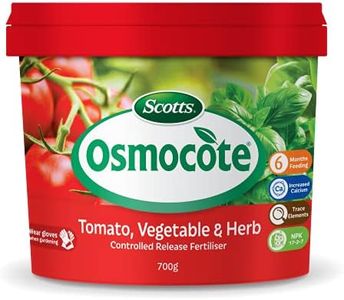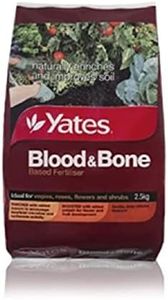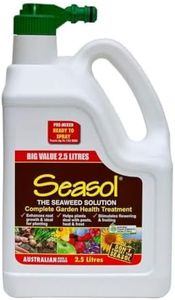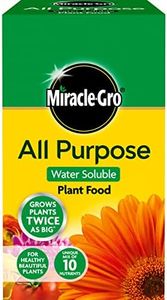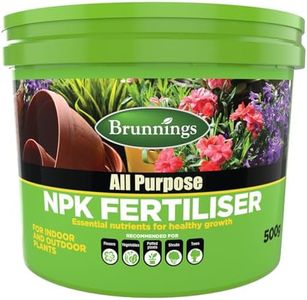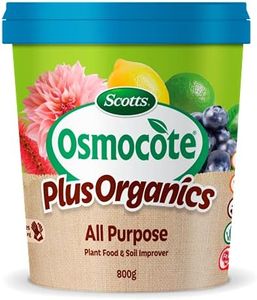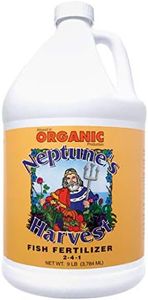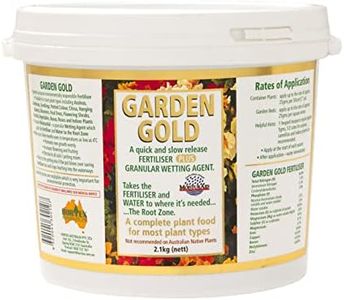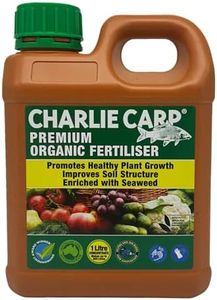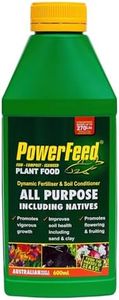We Use CookiesWe use cookies to enhance the security, performance,
functionality and for analytical and promotional activities. By continuing to browse this site you
are agreeing to our privacy policy
10 Best Pepper Plant Fertilizer
From leading brands and best sellers available on the web.Buying Guide for the Best Pepper Plant Fertilizer
Choosing the right fertilizer for your pepper plants can make a big difference in how healthy they become and how many tasty peppers they produce. Fertilizers provide essential nutrients that your plants might not be getting from the soil, helping them grow stronger and produce more fruit. When picking a fertilizer, it's helpful to focus on how it matches your garden goals and the specific needs of peppers, which are often slightly different than those of other vegetables.N-P-K RatioThe N-P-K ratio stands for Nitrogen (N), Phosphorus (P), and Potassium (K), which are the three main nutrients plants need. On every fertilizer package, you’ll see numbers like 5-10-10 or 10-10-10—these are the N-P-K values. Nitrogen helps leaves grow, phosphorus supports strong roots and flowers, and potassium aids the overall health and resistance of the plant. For peppers, balanced or slightly higher phosphorus and potassium relative to nitrogen (like 5-10-10) is often good. Too much nitrogen can create lots of leaves but fewer peppers. If you’re starting plants, a fertilizer with more phosphorus aids root growth. For producing fruit, a lower-nitrogen and higher phosphorus-potassium is best. Think about where your plant is in its life: more balanced for early growth, more phosphorus/potassium when flowering and fruiting.
Slow-Release vs. Quick-ReleaseFertilizers come as slow-release or quick-release types. Slow-release fertilizers break down over time, giving a steady flow of nutrients, while quick-release ones give an immediate nutrient boost. Slow-release types are good for beginners and busy gardeners since they require less frequent application, making it easier to avoid overfeeding or burning plants. Quick-release fertilizers are helpful if your plants show sudden deficiencies and need immediate help, but they need careful application. Your choice depends on how much hands-on care you want to give—if you prefer set-and-forget, go for slow-release; if you’re closely monitoring your plants, quick-release can help fix issues quickly.
Formulation (Granular, Liquid, Water-Soluble)Fertilizers are available in granular, liquid, and water-soluble forms. Granular fertilizers are sprinkled on the soil and release nutrients gradually. Liquid fertilizers are diluted in water and applied with watering, offering quick nutrient delivery. Water-soluble powders mix with water for fast absorption. Granular is low-maintenance and good for slow feeding; liquid and water-soluble are good if you want to see rapid results or want to fine-tune how much each plant gets. If you’re new to fertilizing, granular types are easy to use, but if you want quick adjustments or like feeding during watering, a liquid or water-soluble fertilizer works well.
Organic vs. SyntheticFertilizers may be organic or synthetic. Organic fertilizers are made from natural materials like compost, manure, and bone meal; they release nutrients slowly and improve soil health over time. Synthetic fertilizers are made from minerals and chemicals, offering fast-acting nutrients. Organic is best if you want to build up your soil’s natural quality and prefer eco-friendly gardening. Synthetic is a good choice if you need quick results or your soil is in poor condition and needs immediate boosts. Think about whether you prefer an all-natural approach versus a more controlled, immediate effect when making your decision.
MicronutrientsBesides N-P-K, peppers benefit from smaller amounts of other nutrients like calcium, magnesium, and iron—the micronutrients. Calcium is especially important to prevent blossom end rot in peppers. Some fertilizers include these; others do not. If your soil is often lacking in these nutrients or if you’ve had problems like end rot before, look for a fertilizer that includes micronutrients. If your soil is healthy, a basic all-purpose fertilizer may be enough. Your history with plant health and soil quality can guide if you need this feature.


